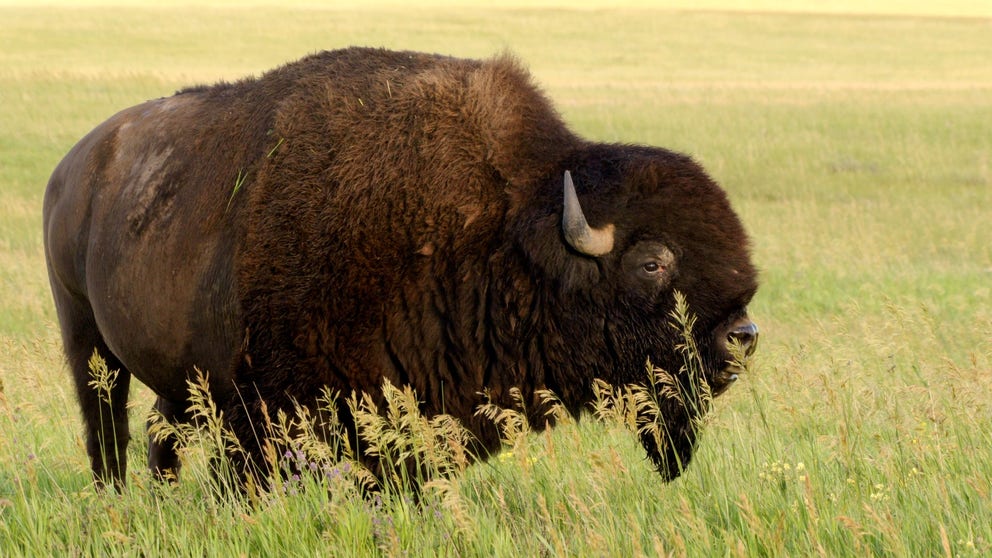How the American bison became a national icon
The country's national mammal has a long and dramatic history
How the bison became a symbol for America
Brought back from the brink of extinction, America's national mammal helped spark the modern wildlife conservation movement.
Standing as tall as a grown man and weighing as much as a car, it’s hard to imagine anything stopping the American bison.
Bison have lived and flourished in North America for thousands of years. While their story is a tale as old as time, the last 150 years — a mere sliver in their history — has been a chapter rife with devastation.
But this story is working toward a happier ending, demonstrating the resilience of the American icon and the potential of the country that they call "home".
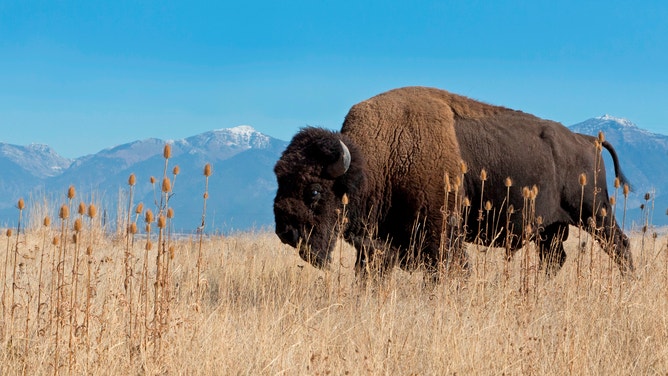
American bison walking in grassland at foot of mountain, National Bison Range, Montana.
(Avalon / Universal Images Group / Getty Images)
Home on the range
"Being around bison is a truly awesome experience and the dictionary definition of awesome," said Jeff Martin, director of research for the Center of Excellence for Bison Studies at South Dakota State University in Rapid City, South Dakota. "You are awestruck because the animals are so large and so menacing, especially when they're in huge herds."
"You get a few hundred to a couple thousand head running together, and it truly makes the ground shake," he added.
According to Martin, American bison are native to North America.
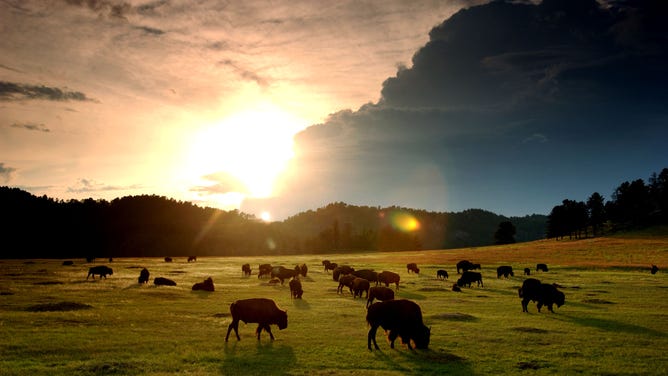
The sun sets behind a herd of bison in Wind Cave National Park in the southern Black Hills of South Dakota.
(David McNew / Getty Images)
In the United States specifically, bison can be found as far north as the Dakotas and Montana and as far south as New Mexico and Texas.
While often referred to as "buffalo", American bison are a different species from true buffalo, animals which are naturally found outside of North America.
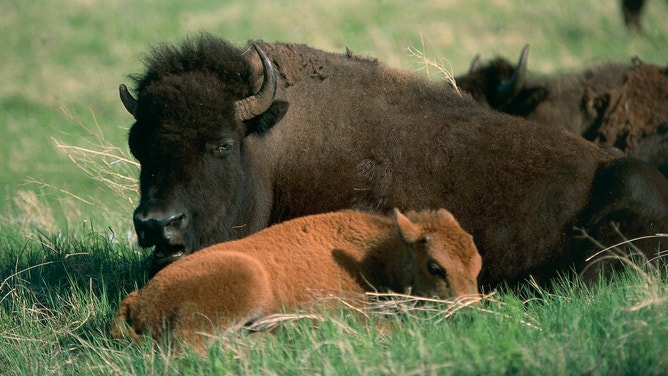
American bison with calf in Custer State Park in South Dakota.
(DeAgostini / Getty Images)
Bison play a critical role on the continent. Specifically, they help shape and restore the prairie habitats they and other animals inhabit.
"Bison are keystone species," Martin said. "Ecologically, they create the form and function of the prairies for other species to thrive."
A prehistoric frontier
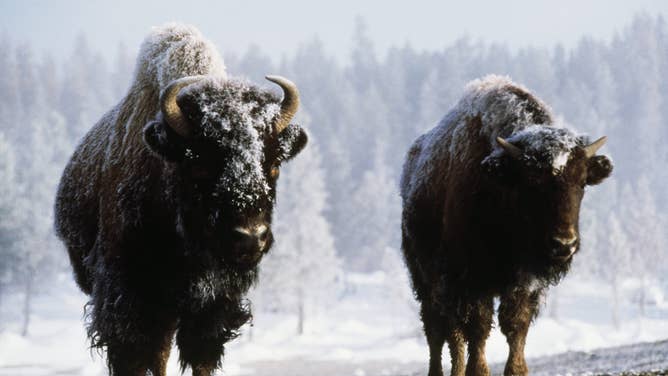
Bison in a snowy Yellowstone National Park in Wyoming.
(DeAgostini / Getty Images)
"They've been here for a long, long time — as many origin stories of Native Americans will say, since time immemorial," Martin said. "And so, before we can even remember, bison have been here."
Bison have lived on the continent for about 300,000 years. By comparison, humans have lived in the Americas for at least 13,000 years.
According to Martin, bison arrived in North America by way of a land bridge between Russia and Alaska.
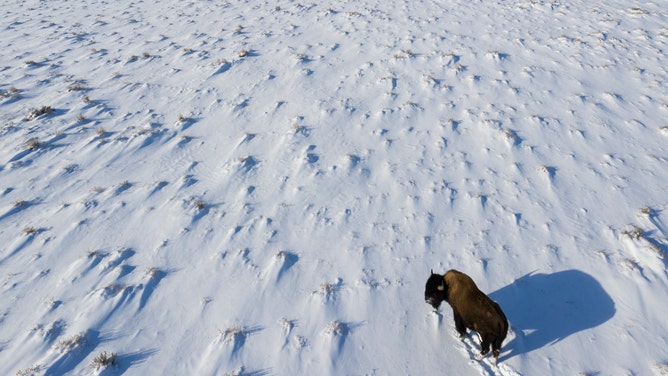
A lone bison roams the snowy landscape.
(Amy Toensing / Getty Images)
Ice sheets covered much of the northern hemisphere at the time, which meant that much of the ocean water was stored in ice, causing the sea level to drop and expose features such as the land bridge to North America.
Bison remained in Alaska, along with the Yukon territories, until about 160,000 years ago when the ice sheets began to melt. This opened up a corridor through Canada and allowed for the bisons’ passage to the lower 48 states.
For much of the bison’s history in North America, said Martin, they numbered between 30 and 60 million.
Of markets and disease
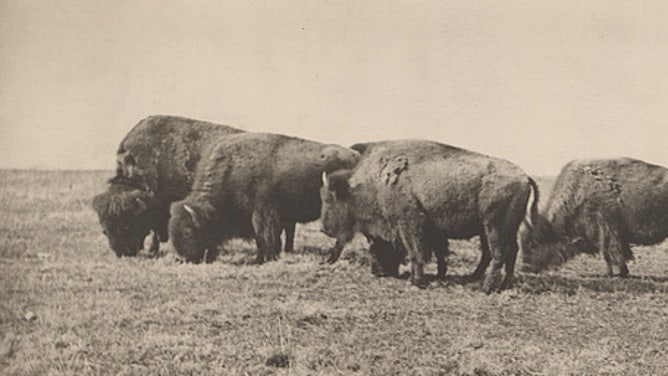
American bison grazing, ca. 1906.
(Library of Congress)
By around 150 years ago, bison numbers were plummeting.
"Two major drivers are forcing that decline," Martin said. "Overhunting has been leading up to that for a couple of decades, but then also epizootic disease."
According to Martin, records from the 1870s show how many bison robes and skins were being shipped to New York City to be tanned and shipped to Europe for sale.
Hundreds of thousands of bison were killed annually to meet this demand, culminating to a peak.
"Between 1872 and 1874, each year, there was 1.2 million bison killed," Martin said.
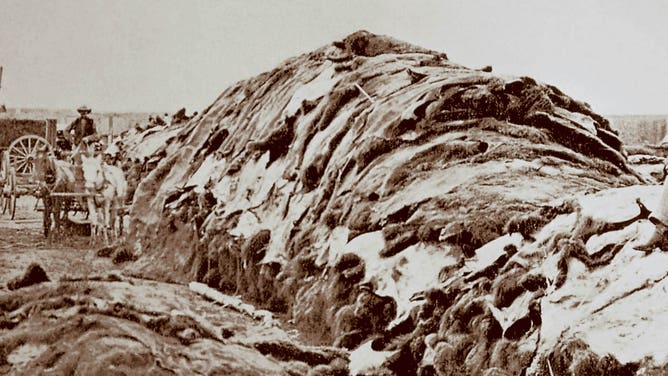
A mountain of bison hides.
(National Park Service)
In addition to the market, bison were also battling a disease epidemic: Texas tick fever. As its name suggests, the disease is usually found in Texas (particularly, in the warmer southern region), and it stems from cattle.
"When these cattle droves were pushing cattle up into Montana and Colorado and places like this prior to barbwire fencing, we would have, then, cattle and bison touching nose-to-nose, spreading diseases," Martin said.
According to Martin, Texas tick fever has a fatality rate of 84%. The only other disease in wildlife and livestock that's deadlier is anthrax.
"[Bison] never really were exposed to this disease before — it was a novel epizootic, and it was devastating to their populations," he said.
Because of the Texas tick fever and overhunting, bison numbers dropped from between 30 and 60 million to fewer than 1,000 by 1889.
Teddy bison
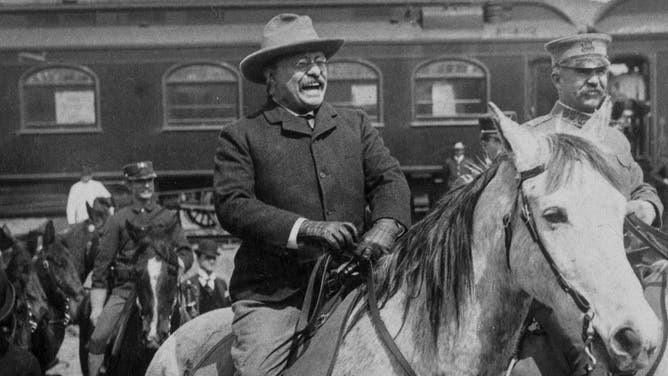
President Theodore "Teddy" Roosevelt rides on horseback at Yellowstone National Park in 1903.
(Library of Congress)
While America’s bison struggled during this period, it was also a time when they gained a crucial ally.
"The loss of bison was happening at the same time that young Theodore Roosevelt was living in North Dakota," Martin said. "As he was working his ranch in North Dakota, he witnessed this decline that caused major angst in his thinking, and he wanted these to be available for future generations."
Roosevelt channeled his desire to conserve the country’s resources in 1887 by founding the Boone and Crockett Club. Starting in 1901, he expanded his efforts when he held the most powerful position in the country.

Roosevelt (left) and fellow conservationist John Muir (right) in Yosemite National Park.
(Creative Commons)
"Once President Roosevelt became president, he then initiated at the national level a public movement that we now refer to today as the conservation movement of the 20th century," Martin said.
"It's because of bison," he added. "Bison is what placed these thoughts into Roosevelt, Grinnell, Miur, all of these early conservation heroes that we think of today."
According to Martin, bison numbers began to rebound, from about 700 in 1902 to 17,000 in 1929.
A story of America
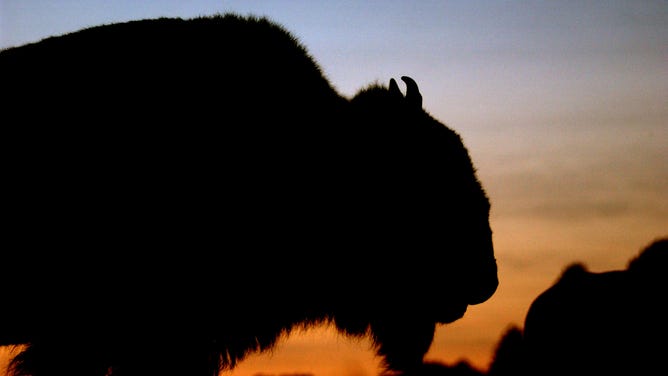
The sun sets behind a bison in Wind Cave National Park in the southern Black Hills of South Dakota.
(David McNew / Getty Images)
"Bison are full throttle, steam ahead," Martin said, adding that as of 2018, about 372,000 bison roam the continent.
The animal's place in the American canon was cemented in 2016, when legislation was passed to make bison the national mammal of the United States.
"It had almost unanimous support in both chambers, again, who were typically at each other's throats, but unified because we have this amazing animal," Martin said.
"Bison is a story of America — it's a story of Americans," he added. "They have to go through trials and tribulations, get back to be strong again, and I think we do the same thing."

American bison in Alaska's Katmai National Park and Preserve.
(DeAgostini / Getty Images)
For Martin, this story is one about a country’s flaws, fault, but also, resilience.
"We've now learned from our mistakes, and we're going to do this the smart way, where we now make concerted efforts to unify bringing bison back," he said. "And so, we can do that politically as well if we just follow the story of bison."
"Put aside all of our pettiness, we can work together to rebuild what we used to have."
